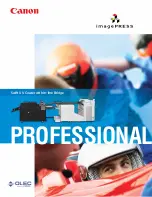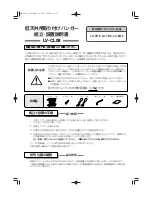
www.balluff.com
8
5.
Functional descrip tion
5.1.
Dynamic inclination mea surement princ i ple
Conventional inclinometers measure inclination by measuring g-forces using an accelerometer. In static
conditions, inclination measurement by this principle is accurate and reliable. However, the vibrations or
movements present on almost all industrial machines generate undesirable g-forces. These dynamic g-forces
accumulate and overlay the static g-
forces, causing a ‘dirty’ inclination output that includes spurious or noise
components.
In certain applications a low-pass filter can be used to stabilize the output. The downside of this filtering is that it
significantly increases the reaction time (latency) of the inclinometer. In a control system this results in a limit on
the speed of movements, and reduced machine efficiency.
A gyroscope measures the speed of rotation. It therefore measures inclination perfectly in dynamic situations, but
in static situations it is useless, due to bias drift.
The Dynamic Inclinometer combines accelerometer MEMS and gyro MEMS. This device is unaffected by
vibration or movement, and can therefore measure the true angle at the sensor position in real time. Our smart
algorithms (such as Kalman filtering) within the device can determine the balance between the accelerometer
MEMS (best result in static situations) and the gyro MEMS (best result in dynamic situations).
Figure 8 - Measurement principle of the dynamic inclinometer
Acceleration MEMS
Gyroscope MEMS
Smart algorithm
















































